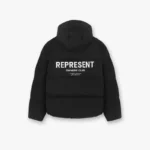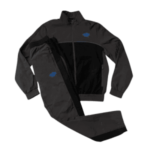Whenever we think about the fashion industry, the very thing that comes to mind is “beauty” accompanying elegance. For decades, societal beauty ideals reign over the industry, stereotyping the word “BEAUTY” with a skinny white woman on the ramp. The Societal beauty ideals for women were constantly molded by cultural, historical, and geographic factors that contributed to bias and discrimination. This idealistic approach has made a bad impact on generations over the decades, resulting in a series of discriminatory acts from body shaming, color, height, weight, and gender exclusivity to ethnic demoralization.
The fashion industry is now observing a change, with inclusivity and diversity becoming the dominant trends, including age, skin tone, ethnicity, sexual orientation, body size, etc. The fashion industry has recognized the importance of representing diverse voices, views, and perspectives. This shift towards inclusivity and diversity is a positive development. More and more brands are stepping towards inclusivity, which shows they are moral and affect how they do business.
Breaking Stereotypes: Why Size Inclusivity Matters
This has long been one of the criticisms against the fashion industry for perpetuating unattainable beauty standards that usually favor only a few body types. Size inclusivity is an important step in breaking such stereotypes. It defies the notion that beauty can only be achieved within specific measurements and opens up the realization that all bodies deserve fashionable and well-fitting clothes. Embracing size inclusivity helps the industry accept the fact that every person is meant to look and feel great in whatever body type they come with. A positive, body-positive environment encourages embracing a person’s natural shape and refusing the damaging notion of “one size fits all.”
Expanding Size Ranges: A Step toward Inclusive Fashion
A high expansion in sizes is one of the most prominent methods to make the fashion of today more representative and inclusive of more people. In contrast, traditionally, there has been merely a limited array of sizes: many brands did only up to XL or 2XL while excluding a tremendous percentage of the population. Hence, more people can avail clothing from them by carrying an expanded scope of sizes between petite and plus-size. This expansion does not just mean offering larger or smaller options and designing clothing that works for different body proportions. This approach reflects a more inclusive definition of beauty and fosters an environment where fashion is for everyone, not just a select few.
The Business Benefits of Embracing All Body Types
Size inclusivity is not merely considered a moral act for the segment but also the key to good business. Plus, size was considered a humiliating topic for people; however, the global market is growing for plus-size clothing. Plus size customers who were ashamed of asking for their right size or were bound to wear a t-shirt, etc., can now ask for branded designer outfits in their respective sizes in this contemporary global market. Brands embracing all body types are paving their way into underserved demographics. Offering product lines with a range of designs and sizes is amassing the customer base and brand loyalty. Size inclusivity also increases positive word-of-mouth and increased popularity over social media. For example, a Brown Leather Jacket, presented by various brands, can only be sold to a variety of people with different sizes if the brand offers a range of sizes and an option for customization.
The more the customers are satisfied with their own sizes, the more they will propagate and advocate that respected brand. In this contemporary world, people are more aware of ethical practices and representation; size inclusivity attracts a broader audience and enhances a brand’s reputation as a forward-thinking, customer-centric company.
Empowering Consumers: The Role of Representation in Fashion
Everybody wants to look good and presentable. Representation is a powerful tool influencing how people observe themselves and their world. When fashion brands present models of all sizes on the ramp and in their advertisements, a positive message is delivered to consumers that they, too, are fit for the fashion world. The sight of diverse body types represented in commercials, runway shows, and campaigns lets these individuals feel confident in their own skin. They also help people understand that they don’t need to follow a stereotypical body style to be stylish or fashionable. Representation also promotes inclusivity, ensuring that the fashion industry acknowledges and values people of all sizes regardless of their demographics. This particular move towards inclusivity boosts self-esteem and promotes a more inclusive culture in society with moral values as a whole.
Conclusion
Now, most of the major companies and brands within the industry are embracing this reality not verbally but practically. It has become a viral trend as the fashion industry, which is a part of the business industry, knows well that embracing size inclusivity not only enhances their moral representation but the expansion of their business is also dependent on it as the people have more awareness as they had before.





